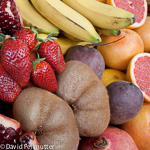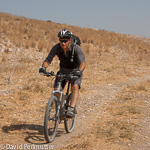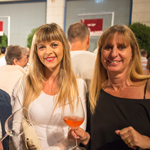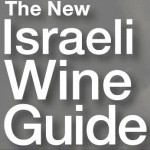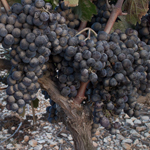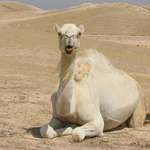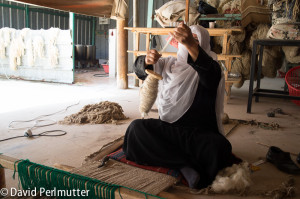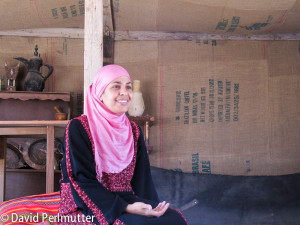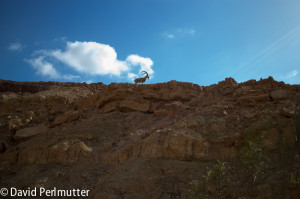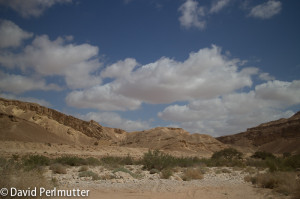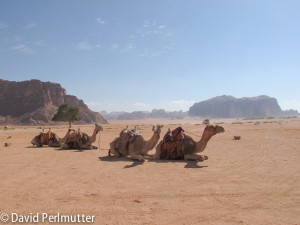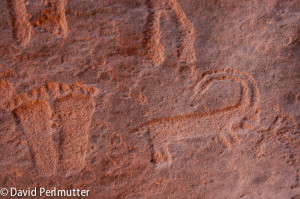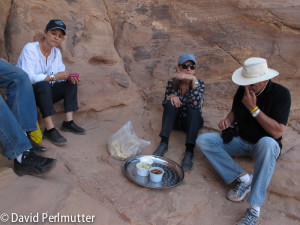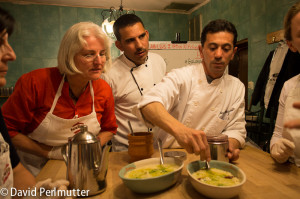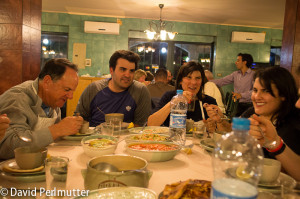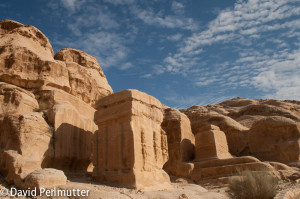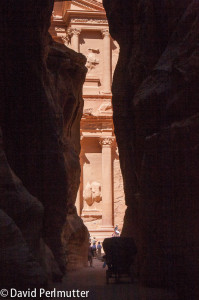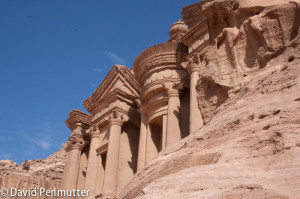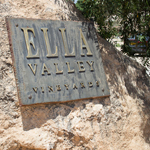Carignan almost ready for harvesting.
Outside of the international consensus but deep in the Biblical heartland of Israel, lies the settlement Beit El. Beit El is mentioned many times in the Bible. Beit El is where Jacob dreams of the ladder that reaches into the heavens, with angles ascending and descending. And in his dream God promises Jacob to give him and his descendants the land on which he lays. When he wakes up, Jacob says, “Surely the Lord is in this place, and I did not know it”.

Beit El Winery vineyards on the ancient terraced slopes.

Vigernon and winemaker Hillel Manne in his vineyards.
In 1996 Hillel and Nina Manne settled in the modern community of Beit El. For Hillel there was nothing more natural to express his connection to the land than planting vineyards on the ancient terraced slopes, full of archaeological remnants from Israel’s ancient wine industry.
The vineyards are reminiscent of the Song of the Vineyard that appears in Isaiah 5:1-7. Here we see the remains of the winepresses and towers described in the scripture.

Ancient watchtower in the vineyard.

Hillel describing ancient wine making techniques at a 2,000 year old wine press.
Four years later, with his first commercial harvest Hillel decided to produce a low-cost simple wine that he could sell to his neighbors for sacramental use. Unfortunately, this was an economic disaster and Hillel began his quest to produce quality wines from these ancient hilltops.
Beit El is blessed with favorable terroir for wine grapes. The soil is terra rossa and the diurnal temperature differences are favorable for ripening the grapes. The Cabernet Sauvignon does not receive any irrigation.

New vines on ancient terraces
Hillel studied at the University of California, Davis. Unlike most Israelis who studied there, he studied field crops as part of his preparations in moving to Israel in the late 1970’s. These studies in agriculture, did however give Hillel the necessary background in sciences that help him in his wine making.
Realizing that quality wine begins in the vineyards, Hillel began to cut back on the yield in his vineyards to produce better wines. Beit El Winery grows three varieties: Cabernet Sauvignon, Merlot and Carignan with yields of about 500-600 kg. per dunam (or 5 tons per hectare). With better grapes, Hillel succeeded in making better wines.

The view from Beit El’s vineyards, almost unchanged since Jacob was here.
Realizing that he needed more help in improving his wines, two years ago Hillel turned to Lewis Pasco as a consulting winemaker. Lewis Pasco who studied wine-making at UC Davis and was the founding winemaker at renowned Recanati Winery. Lewis Pasco’s help, Hillel has improved the quality of his wines.

Beit El Winery
With the 2013 vintage, Hillel has made for the first time wine that is worthy of maturing in oak barrels. The decision to oak or not will be mainly economic. Maturing in bottles requires a significant investment of about 600 euros per 250 liter barrel as well as delaying the income from the wine for at least the time spent in barrels.

The 2013 vintage near the end of the fermentation.
In 2012 Beit El winery exported 240 cases of wine to the US. All of this shipment was sold out. Beit El wines will sell for $20.00 – $24.00 in the US when the next shipment arrives.

Hillel Manne enjoying the 2012 vintage, almost ready for bottling.
I can’t wait to return to Beit El Winery sometime in about two years to taste their first wines that are aged in French oak barriques!
http://www.beitelwinery.com

